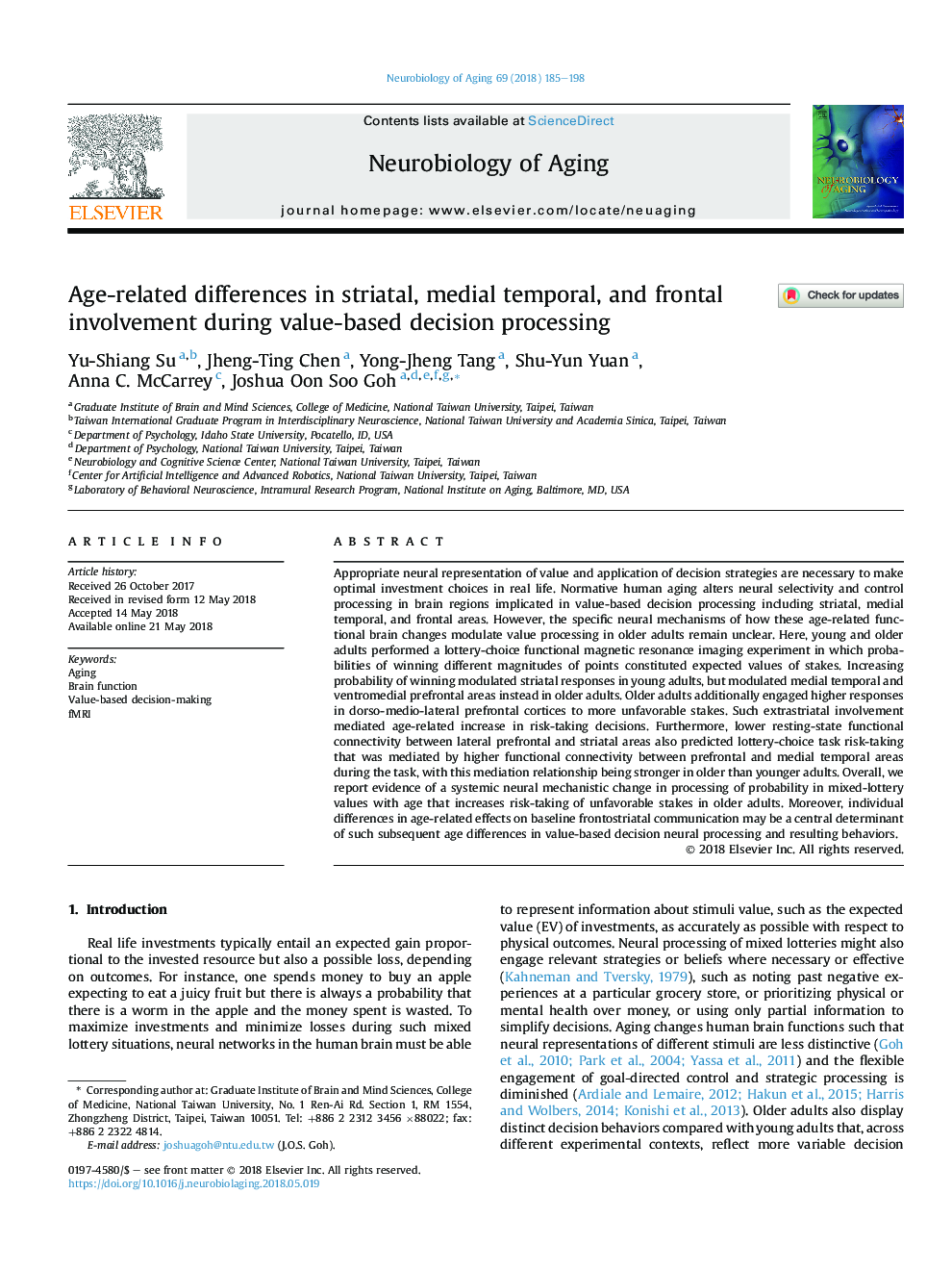| Article ID | Journal | Published Year | Pages | File Type |
|---|---|---|---|---|
| 6802854 | Neurobiology of Aging | 2018 | 14 Pages |
Abstract
Appropriate neural representation of value and application of decision strategies are necessary to make optimal investment choices in real life. Normative human aging alters neural selectivity and control processing in brain regions implicated in value-based decision processing including striatal, medial temporal, and frontal areas. However, the specific neural mechanisms of how these age-related functional brain changes modulate value processing in older adults remain unclear. Here, young and older adults performed a lottery-choice functional magnetic resonance imaging experiment in which probabilities of winning different magnitudes of points constituted expected values of stakes. Increasing probability of winning modulated striatal responses in young adults, but modulated medial temporal and ventromedial prefrontal areas instead in older adults. Older adults additionally engaged higher responses in dorso-medio-lateral prefrontal cortices to more unfavorable stakes. Such extrastriatal involvement mediated age-related increase in risk-taking decisions. Furthermore, lower resting-state functional connectivity between lateral prefrontal and striatal areas also predicted lottery-choice task risk-taking that was mediated by higher functional connectivity between prefrontal and medial temporal areas during the task, with this mediation relationship being stronger in older than younger adults. Overall, we report evidence of a systemic neural mechanistic change in processing of probability in mixed-lottery values with age that increases risk-taking of unfavorable stakes in older adults. Moreover, individual differences in age-related effects on baseline frontostriatal communication may be a central determinant of such subsequent age differences in value-based decision neural processing and resulting behaviors.
Keywords
Related Topics
Life Sciences
Biochemistry, Genetics and Molecular Biology
Ageing
Authors
Yu-Shiang Su, Jheng-Ting Chen, Yong-Jheng Tang, Shu-Yun Yuan, Anna C. McCarrey, Joshua Oon Soo Goh,
